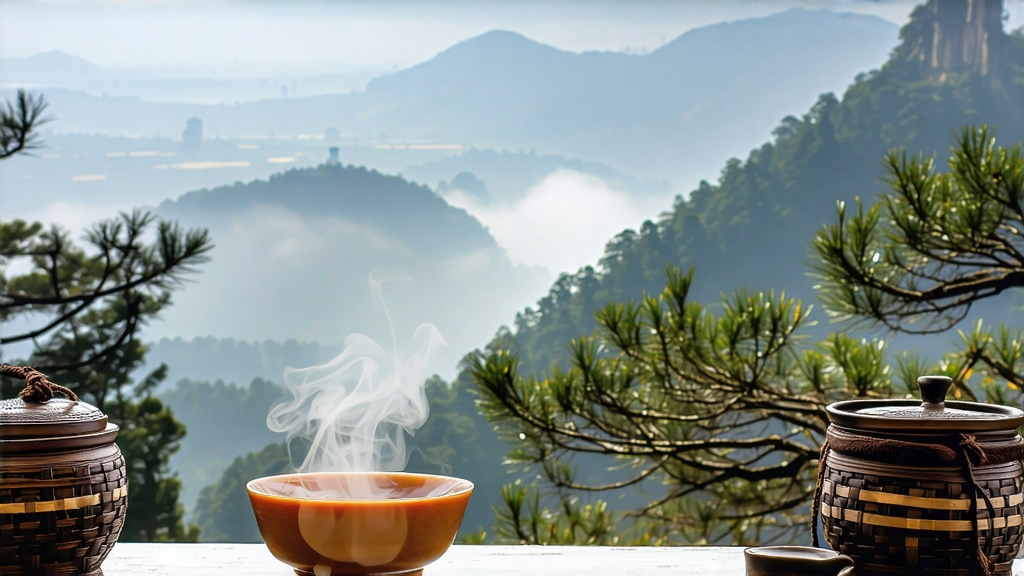
Long before English tea clippers raced across the oceans and Victorian drawing rooms echoed with the clink of bone-china cups, a small village deep in China’s Wuyi Mountains was already perfuming its teas with fresh pine smoke. That village—Tongmu—gave the world Lapsang Souchong, the earliest known black tea and the prototype for every leaf that would later be labeled “red” in China or “black” in the West. To understand Lapsang Souchong is to hold a thread that stitches together Ming-dynasty ingenuity, Qing-era global trade, and modern specialty-tea connoisseurship; it is to taste camp-fire in a cup while sensing the cool mineral breath of a UNESCO World Heritage cliffscape.
Historical Roots
The exact year of Lapsang Souchong’s birth is debated, but local chronicles agree it appeared around 1568, when a passing army delayed the usual green-tea drying schedule in Tongmu. To save the harvest, farmers rushed the leaves over open pinewood fires, inadvertently oxidizing them fully and locking in a sweet, resinous aroma. The resulting tea traveled down the Nine-Bend River to the port of Xiamen, where Dutch traders bought it as “bohea” (a corruption of “Wuyi”) and shipped it to Europe. By the early 1600s it had become the first Chinese black tea ever recorded in Western logs, predating Keemun by almost three centuries and establishing the very category that would later include Assam, Ceylon, and Darjeeling.
Terroir and Leaf Grades
Tongmu sits in a narrow gorge at 27° N latitude, shrouded by subtropical bamboo forest and granite cliffs that trap morning mist. The micro-climate’s diurnal swing of 10 °C slows leaf growth, concentrating amino acids and polyphenols. Only two cultivars are authorized for true Tongmu Lapsang: xiao ye zhong (small-leaf native bush) and a local clone known as “cai cha,” prized for its low astringency. Within the village, the term “Souchong” originally denoted the fourth and fifth leaves—larger, tougher, and more aromatic when smoked—while “Lapsang” referred to the high-mountain gaps where these leaves were picked. Today the grade hierarchy runs from the delicate “Jin Jun Mei” (bud-only, no smoke) through “Zheng Shan Xiao Zhong” (bud and first leaf, light smoke) to the classic “Lapsang Souchong” (third and fourth leaves, assertive smoke). Any leaf bearing the official “Zheng Shan” seal must be both picked and processed inside Tongmu’s 56 km² core zone; outside that boundary the same technique yields simply “smoked black tea,” a cousin rather than a sibling.
Crafting the Smoke
The magic happens in a three-room wooden shed built over a pine-log trench. After plucking, the leaves are withered on bamboo racks suspended above gentle embers of local Masson pine and a pinch of cedar. The smoke must be cool (28–32 °C) and resin-rich; too hot and the leaf chars, too cool and the fragrance turns musty. Over six hours the smoke dries and oxidizes simultaneously, fixing a spectrum of guaiacol and syringol compounds that translate into campfire, dried longan, and whisky notes. Next comes rolling under low pressure to keep the leaf intact, then a second, shorter smoking that lasts only 20 minutes—just long enough to “set” the aroma without overwhelming the innate honeyed sweetness. Finally, the tea rests in unglazed clay jars for 45 days so the phenols marry and the rough edges soften. The result is a glossy, dark-chocolate leaf that smells like pine sap and dark fruit in equal measure.
Brewing: Western Pot vs. Gongfu Style
Lapsang Souchong forgives the novice yet rewards the obsessive. For a Western approach, use 3 g per 250 ml of 95 °C water, steep three minutes, and expect a bright copper liquor with crisp smoked-caramel notes. Milk softens the edge but obscures the subtle dried-fig sweetness, so taste it naked first. For gongfu, load a 120 ml gaiwan with 5 g, flash-rinse to wake the leaf, then proceed with 10-second infusions, adding five seconds each round. The first three cups deliver pine, honey, and a whisper of narciss